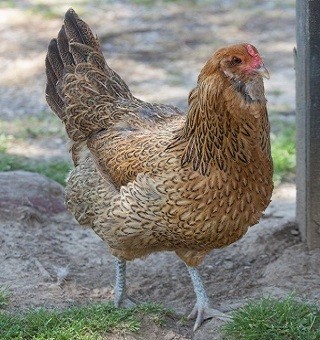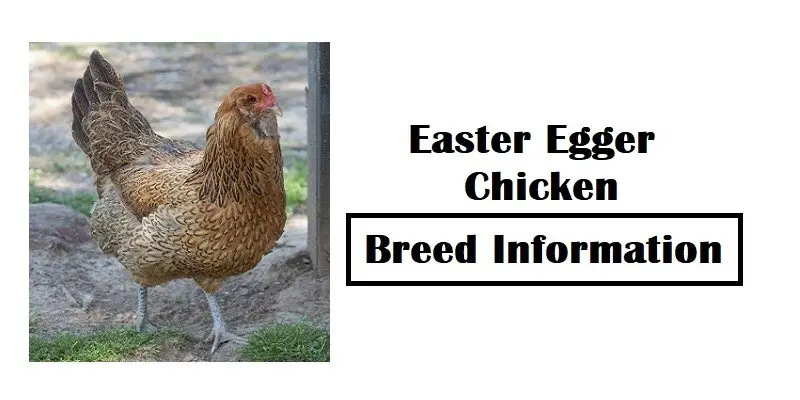The origin of Easter Egger Chicken is not distinguished. It is neither a separate nor recognized chicken breed by the American Poultry Association (APA). They are derived from the same descendants of Ameraucanas, and Araucanas breeds from Chile and Falklands and were bred with many other different breeds.
Entirely different from other breeds, they come in varieties and colors. Each Easter Egger chicken has a difference from one another. Still, they are usually smaller birds that lay eggs that are pink, green, or blue. Often, they have muffs and pea combs. Some have ear tufts or rumples.
In today’s usage, any chicken that possesses the “blue egg” gene is called an Easter Egger. The blue-green color is accounted for by the oocyanin. This is the deposited pigment on the surface of the shell. In other words, they are hybrid.
Easter Egger Chicken | Breed Profile

| Country of origin: | Chile |
| Primary use: | Eggs |
| Weight: | Boys weighing around 5lb and the girls 4lb |
| Temperament: | Peaceful |
| Recognized Varieties: | None recognized, but plumage varies widely |
| Egg production (annual): | 180 |
| Egg color: | Green/Blue/Pink/Multi |
| Egg size: | X-Large |
| Comb type: | Pea Comb |
Characteristics Of The Easter Egger Chicken
Large to extra-large easter egger chicken eggs come from smaller birds, and they are generally olive, green or blue, aqua and pink. Egg-laying is their only purpose.
Conforming to no known chicken standard, they cannot be used for a show. But this variety of chicken breeds is usually friendly yet quiet. They are an excellent choice for a family pet and can do no harm to anyone.
Most of poultry raisers and sellers mistakenly label this flock as either Ameraucanas or Araucanas. They retain many characteristics of the first. They lay 4 large to extra-large multi-colored eggs – pink, green, aqua, olive, blue, brown to sage, and even pinkish.
There is no chicken class for this large fowl and bantam type of chicken. They are very common. Their sizes are medium, ranging from 6 to 7 pounds. They have a pea comb type, not crested, no feathered legs, and have four toes.
Behavior/ Temperament/ Use
This hybrid chicken is hardy in winter and can tolerate heat very well. They can also bear close confinement. They are unusually docile, not broody, and they are fun.
When Easter Eggers are crossed with another brown egg layer such as Marans, their easter egger chicks will result in an olive green egg, which is sometimes called the Olive Egger.
They are considered a type-B or not a huge bird. Fabulous birds as they are, they are considered just a mutt. They are an all-around wonderful and favorite chicken pet.
The most dominant gene is the green colored egg when they are crossed with other breeds. Their plumage widely varies. They are a little smaller than the Wyandotte, the Orpington, and the Australorp.
What We Liked/Pros
- Easter Egger Chicken are hardy and excellent egg layers especially during winter.
- Produces large to extra-large various colored eggs.
- Fun for kids because their multi-colored eggs are fun to look at.
- They can bear confinement.
- Can be experimented to cross breed with other chicken breeds and come up with another common variety.
- There is an abundant supply.
- Docile, not broody, quiet and friendly in nature.
- Good as family pets.
What We Don’t Like/Cons
- Does not conform to any known chicken breed standard.
- Single-purpose chicken breed.
Related Articles:
- Dorking Chicken Breed Information, Characteristics, Temperament
- Dominique Chicken Breed Information, Characteristics, Temperament
- Derbyshire Redcap Chicken Breed Information, Characteristics, Temperament
Last Updated on January 14, 2025 by Pauline G. Carter

